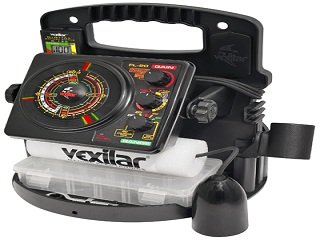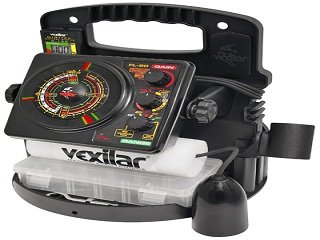 Today marks the final chapter of my series on Ice Fishing preparation this season. So far, I’ve highlighted rods and reels, lures and line, and tried to provide you all with a little information on each of those facets of the sport. Anyone just gaining exposure to ice fishing will no doubt be a little unsure of what exactly they need and what each piece of seemingly foreign tackle is for. Hopefully, the general outlines I’ve given have gone a little towards clearing any uncertainty. Now, as we bring the series to a close, I’ll delve into shelters and other equipment, such as augers and chisels.
Today marks the final chapter of my series on Ice Fishing preparation this season. So far, I’ve highlighted rods and reels, lures and line, and tried to provide you all with a little information on each of those facets of the sport. Anyone just gaining exposure to ice fishing will no doubt be a little unsure of what exactly they need and what each piece of seemingly foreign tackle is for. Hopefully, the general outlines I’ve given have gone a little towards clearing any uncertainty. Now, as we bring the series to a close, I’ll delve into shelters and other equipment, such as augers and chisels.
Ice shelters, or shanties as they’re commonly called, come in several varieties. In fact, last winter, I wrote an in-depth article on how to choose a shelter for your needs. I suggest simply matching the shelter to your needs. For example, if it’s just you out on the ice, a small one-person shelter is ideal, especially if you go with one with a sled-based frame. If you and several friends make it a point to head out to the ice together several times each winter, then it might be smart for everyone to go in on a multi-person shelter.
Some ice anglers really don’t need a shelter at all, and anyone just starting out or trying ice fishing for the first time will not need to purchase one at all. Often, if the weather and your available clothing permit, you can get away with a simple bucket turned upside down and used as a seat.
Other than shelters, you’ll need an auger to drill the holes, and usually, a manual auger is the cheapest and most practical way to go, especially for beginners. Those anglers who frequent the ice each season, or are interested in doing so more regularly would do well to look into purchasing a gas or electric auger. These powerful tools are invaluable in terms of making quick work of the ice and drilling holes in a matter of seconds.
In recent years, many ice anglers have invested in sonars, or flashers, to help them locate fish, as well as read the geography of a lake. Most fishermen simply don’t want to drill dozens of holes or methodically lower weights to the bottom just to discover where drop-offs are. The beauty of modern sonar devices is that you don’t even have to drill a hole to use them. Simply pour water over the ice and placing the sensor in the water, you can get an accurate reading of depth, structure, and fish in the area. Ultimately, this allows more time to fish and less time for drilling holes left and right. Vexilar is a popular manufacturer of quality flashers.
For other items that are good to have nearby on the ice, I’d suggest checking out my ice fishing articles from last winter, where I cover everything from ice cleats to sleds. I hope this four-part series has helped newcomers to the ice fishing world obtain a little knowledge on a little of different elements of the sport.








